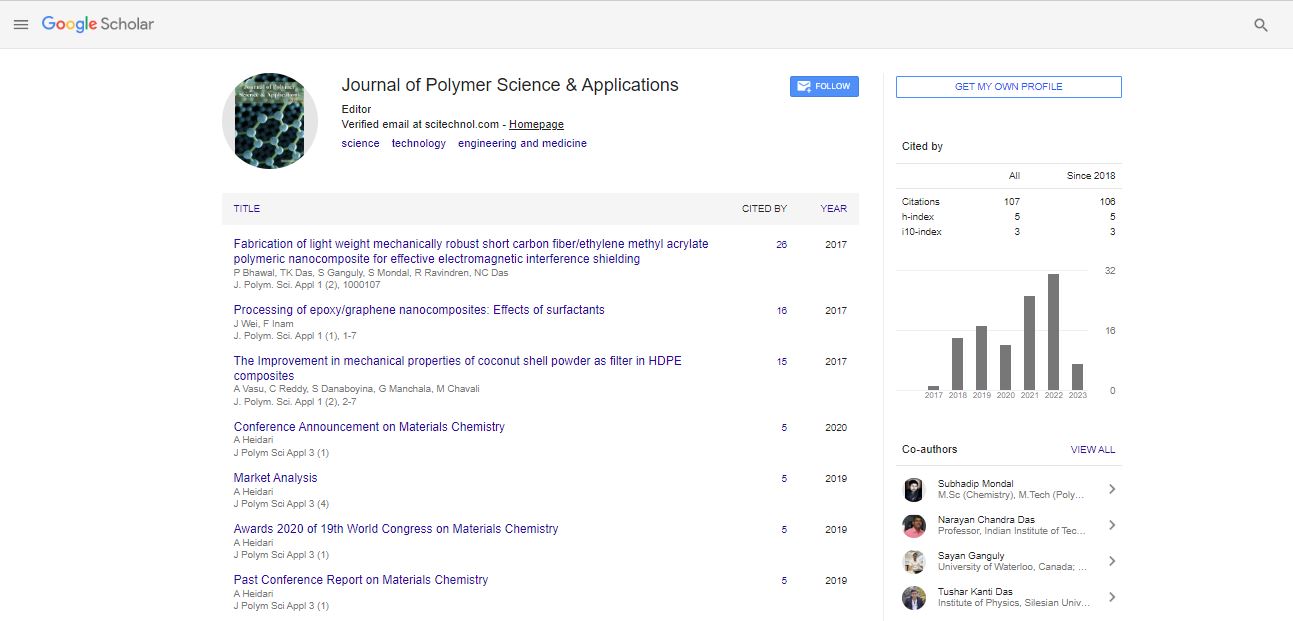Luminescence chemosensors based on polythiophene
Jiri Zednik
Charles University, Czech Republic
: J Polym Sci Appl
Abstract
This contribution reports the synthesis and post-polymerization modification of highly regioregular polymer precursor poly[3-(6-bromohexyl) thiophene] (PHT-Br), prepared by nickel- catalyzed Grignard metathesis polymerization (GRIM). Modification of PHT-Br into corresponding cationic polyelectrolytes using simple quaternization reaction with tributylamine or tributylphosphine respectively was used as the first approach for introducing functionality allowing sensing of selected metal ions. Used procedure allowed preparation of luminescent conjugated polyelectrolyte bearing simultaneously both phosphonium and ammonium pendant groups in the same polymer mainchains. Transformation of pendant bromide groups into azides ones followed by Huisgen 2+3 dipolar cycloaddition (“click”reaction) with luminophore N-(prop-1-yne-3-yl)-4-(morpholine-1-yl)-1,8-naphthalimide coded as NF was used as a second approach. Luminescence quenching has been evaluated quantitatively using Stern-Volmer methodology (using potassium ferrocyanide and ferricyanide as model pollutants). Polyelectrolyte-approach appeared promising although it is worth to mention a partial lack of selectivity. Clickbased approach increased the sensor selectivity. Although free NF provided high luminescence yield (around 80%) as well as parent polythiopehene (18% luminescence quantum yield) product of “click” reaction exhibited only 4% of quantum luminescence yield. This observation represented a main drawback of “click” approach. In contrary sensing abilities of nahpthalimide-based polythiophene increased about two orders.
Biography
Jiri Zednik has completed his PhD in 1999 from Charles University in Prague (organic chemistry) and Post-doctoral studies in 2005-2006 form University of Liege (Center for Education and Research on Macromolecules (CERM) Prof. Robert Jerome group). He works as a Researcher in the Department of Physical and Macromolecular Chemistry, Charles University in Prague. He has published 57 articles in highly reputed journals.
E-mail: zednik@natur.cuni.cz
 Spanish
Spanish  Chinese
Chinese  Russian
Russian  German
German  French
French  Japanese
Japanese  Portuguese
Portuguese  Hindi
Hindi 